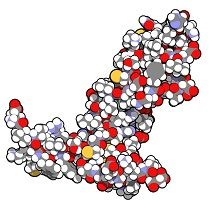Article
Diabetic Macular Edema Study: Ozurdex Outperformed Avastin, but Not Without Drawbacks
Author(s):
Monthly Avastin injections and quarterly Ozurdex injections produced equivalent improvements in best-corrected visual acuity after 7 months. However, Ozurdex reduced central subfield thickness nine times more than Avastin did, though it was associated with elevated intraocular pressure.

Although treatment with anti-vascular endothelial growth factor (VEGF) agents is the criterion standard for diabetic macular edema (DME), a substantial proportion of eyes have persistent DME despite anti-VEGF therapy. Indirect evidence indicates that persistent DME can cause permanent vision loss, possibly because the edema causes prolonged disruption of the retinal architecture, which results in irreversible retinal damage. Therefore, the subset of eyes with persistent DME unresponsive to anti-VEGF agents require an alternative to anti-VEGF therapy.
To compare monthly intravitreal injections of the anti-VEGF agent bevacizumab (Avastin/Roche) with quarterly injections of an intravitreal implant that delivers the corticosteroid dexamethasone for three months (Ozurdex/Allergan), investigators at the Indiana University School of Medicine and the Midwest Eye Institute in Indianapolis, Indiana, did a single-center, randomized, subject-masked subject-masked study in 50 eyes with persistent diabetic macular edema. Persistence was defined as central subfield thickness (CST) >340 μm despite at least three injections of anti-vascular endothelial growth factor (VEGF) agents within 5 months.
At baseline, best-corrected visual acuity and CST were similar in both groups.
After seven months, monthly intravitreal injections of Avastin, 1.25 mg/0.05 mL, and intravitreal implantation of Ozurdex (containing dexamethasone, 0.7 mg) at baseline and every three months thereafter produced similar final best-corrected visual acuities. However, Ozurdex resulted in a final CST that was significantly lower than that for Avastin (336 ± 89 μm vs. 471 ± 157 μm, respectively; P = 0.001), and Ozurdex reduced CST significantly more than Avastin (−122 ± 120 μm vs. −13 ± 105 μm).
Moreover, Ozurdex therapy required approximately 60% fewer injections than Avastin therapy (2.7 ± 0.5 vs. 7.0 ± 0.2, P < 0.001). The investigators noted that fewer injections may require fewer patient visits. They also noted that the Ozurdex group had no recurrent edema at any visit.
Nevertheless, a greater proportion of patients in the Ozurdex group had an elevation in intraocular pressure and needed anti-glaucoma agents. However, none of the eyes in either treatment group needed laser therapy or surgery for glaucoma.
Related Coverage:
Researchers Close In on Genetics of Age-Related Macular Degeneration
Comparing Quality of Life in Patients with Age-Related Macular Degeneration and Glaucoma




